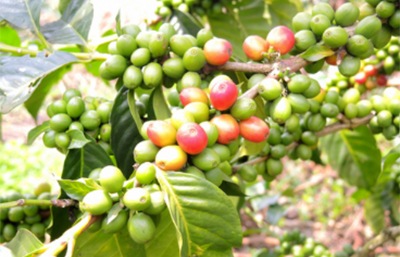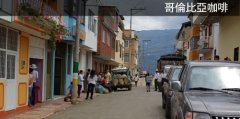Coffee beans that are easy to brew successfully-Colombian Coffee beans Colombian San Tuareo Manor

For professional baristas, please follow the coffee workshop (Wechat official account cafe_style)
Colombian coffee is widely sold in many producing countries, ranking the third largest in the world (the first is Brazilian coffee and the second is Vietnamese coffee). The main factor is that the active volcanic activity has created the most fertile soil in the world. Grow coffee beans that are sweet, rich, very pleasing and easy to brew successfully. With Colombian coffee, you can enjoy a mellow atmosphere at home without going to a cafe. Whether it is simple black coffee or Colombian coffee with a variety of formula coffee is a good choice, well-known international coffee chain coffee shops most of the coffee from Colombia.
In recent years, due to the increase in farmers' income due to coffee competitions, Colombian coffee has broken away from the old impression that it can only be used as a base coffee. Before that, Colombian coffee has been regarded as a commercial big big bean or a base formula bean fresh to become a boutique coffee alone. The quality of coffee is judged by the size of beans. In fact, this classification only represents that the size and quality of coffee beans have nothing to do with this is an outdated grading system. Instead, it is grown in high-altitude pristine rainforests, grown naturally without fertilizers and pesticides, farms or cooperatives that are good Colombian coffee, which usually produce very little coffee with strong, hard beans and smaller turquoise beans.
Colombia Finca Santuario, Manor Santu Ario, Colombia
For many years in Colombia's boutique coffee farm, San Tuareo Manor has been a leader in technology and planting methods in the industry, the soul of which is the manor owner Camilo (Camilo Merizalde). Camilo was born in the Valle de Cauca Valley of Colombia. From an early age, he often went to the coffee farm near his home and watched adults process coffee, until he decided to study in the United States after graduating from high school. After graduation, when he worked as the manager of a Colombian food and beverage factory in the United States, he often had the opportunity to go back to his hometown of Colombia to buy raw coffee beans. Camilo began to wonder why Colombian coffee is often not comparable to Africa and Central America in terms of quality. Colombian coffee is often not considered to be one of the boutique coffee producers. During this period, Camilo began to study and read knowledge and books about coffee planting in the United States, hoping to grow stunning boutique coffee. At the same time, Camilo also kept looking for estates with high-quality microclimate environment in Colombia, until he finally found the best farmland in Colombia's Cauca province in 2000. At this time, Camilo immediately began to carry out the transformation of the estate, large and small, ready to realize the ideal coffee farm concept in this manor named San Tuareo (Finca Santuario).
In the first step, Camilo decided to start with the improvement of the soil quality in the manor, by planting a large number of ash leaf plants to provide rich and natural nitrogen, while retaining many native plants and fruit trees to provide diversified sources of soil nutrients. Camilo then began to analyze the topography of the manor and divided it into 266 different micro-blocks. To make it easier for landowners to track and manage the growth of coffee and changes in microclimate in the park. The second step is to start selecting the varieties of coffee to be planted. Camilo made up his mind at the very beginning to choose native varieties with low yield and good quality, and finally planted the first Tibica coffee tree in November 2002. until today, many varieties with excellent cup performance have been expanded in the Chateau de San Tu Ali'o, such as Tibika, geisha, bourbon, pointed bourbon and so on. As the elevation of the manor is as high as 1950 meters above sea level, the temperature difference between day and night is large and covered with volcanic ash soil, so it is especially suitable for the cultivation of these delicate varieties. The third step is to build their own washing treatment plant and exposure drying room, especially the drying room has a lot of very advanced equipment in Colombia. Camilo first installed large exhaust fans on both sides of the drying chamber, using the principle of exhaust fans to accelerate air flow, which can not only avoid excessive fermentation of raw beans, but also stably control the temperature of the exposure room. Camilo, who is full of experimental spirit, has improved the washing equipment in the washing plant through the experience of working with 2015WBC champion Sasa Sestic, using the design of stainless steel buckets and fillets to greatly improve quality stability and sweetness.
Through years of efforts, Camilo's first batch of San Tu Ali raw beans were officially exported in 2005, and today they have become the first choice for many contestants. In addition to WBC champion Sasa Sestic, Australian barista champion Matt Perger in 2013 also praised the raw beans of Saint Tu Ali'o Manor, and won the second place in WBC World Series by combining with EK43 bean mill that year. Camilo in the experience of working with these players has been trying and experimenting with many new ways to improve the quality of coffee, the annual cup test will always find more flavor performance and unique varieties of the manor.
Important Notice :
前街咖啡 FrontStreet Coffee has moved to new addredd:
FrontStreet Coffee Address: 315,Donghua East Road,GuangZhou
Tel:020 38364473
- Prev

Colombian coffee beans story Colombian coffee beans from seeds to a cup of coffee
For the exchange of professional baristas, please pay attention to the coffee workshop (Wechat official account cafe_style) basic data of the Republic of Colombia ● area of Japan 3 times the capital Bogota language Spanish per capita GDP48 ten thousand yen (4.2 million yen in Japan) 2600m above sea level the capital Bogota Colombia has a mountain area. As an equatorial country, so coffee
- Next
Visit the Colombian coffee belt to learn how to taste Colombian coffee.
Professional barista exchanges please follow the coffee workshop (Wechat official account cafe_style) Colombia's most famous crop, apart from drugs, should be coffee beans, the country's coffee production is the world's third / fourth largest producer of Brazil, followed by Vietnam (a little unexpected, but Vietnam mainly produces Robusta, the quality and price are far inferior to the main Arabica coffee beans.
Related
- Detailed explanation of Jadeite planting Land in Panamanian Jadeite Manor introduction to the grading system of Jadeite competitive bidding, Red bid, Green bid and Rose Summer
- Story of Coffee planting in Brenka region of Costa Rica Stonehenge Manor anaerobic heavy honey treatment of flavor mouth
- What's on the barrel of Blue Mountain Coffee beans?
- Can American coffee also pull flowers? How to use hot American style to pull out a good-looking pattern?
- Can you make a cold extract with coffee beans? What is the right proportion for cold-extracted coffee formula?
- Indonesian PWN Gold Mandrine Coffee Origin Features Flavor How to Chong? Mandolin coffee is American.
- A brief introduction to the flavor characteristics of Brazilian yellow bourbon coffee beans
- What is the effect of different water quality on the flavor of cold-extracted coffee? What kind of water is best for brewing coffee?
- Why do you think of Rose Summer whenever you mention Panamanian coffee?
- Introduction to the characteristics of authentic blue mountain coffee bean producing areas? What is the CIB Coffee Authority in Jamaica?

